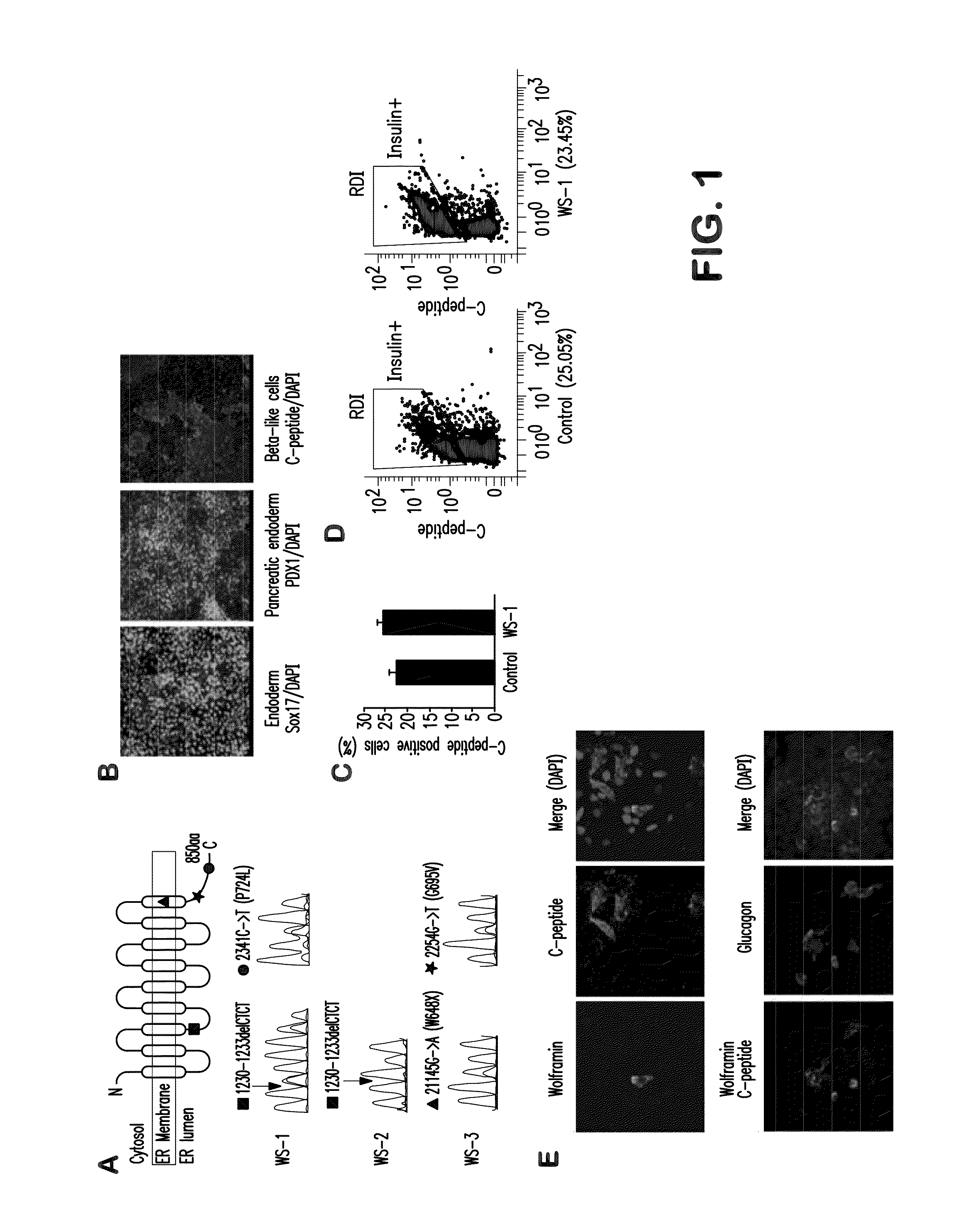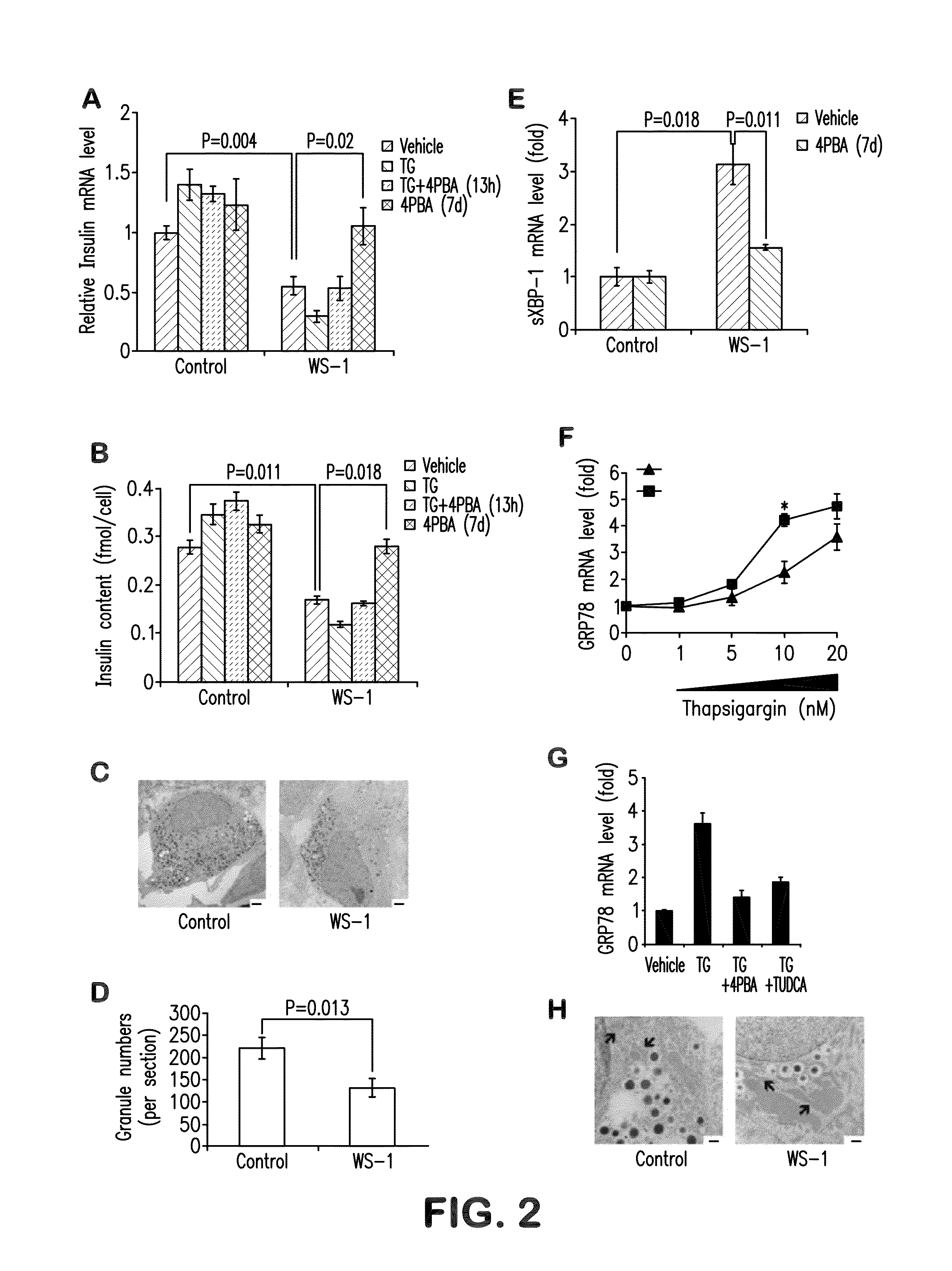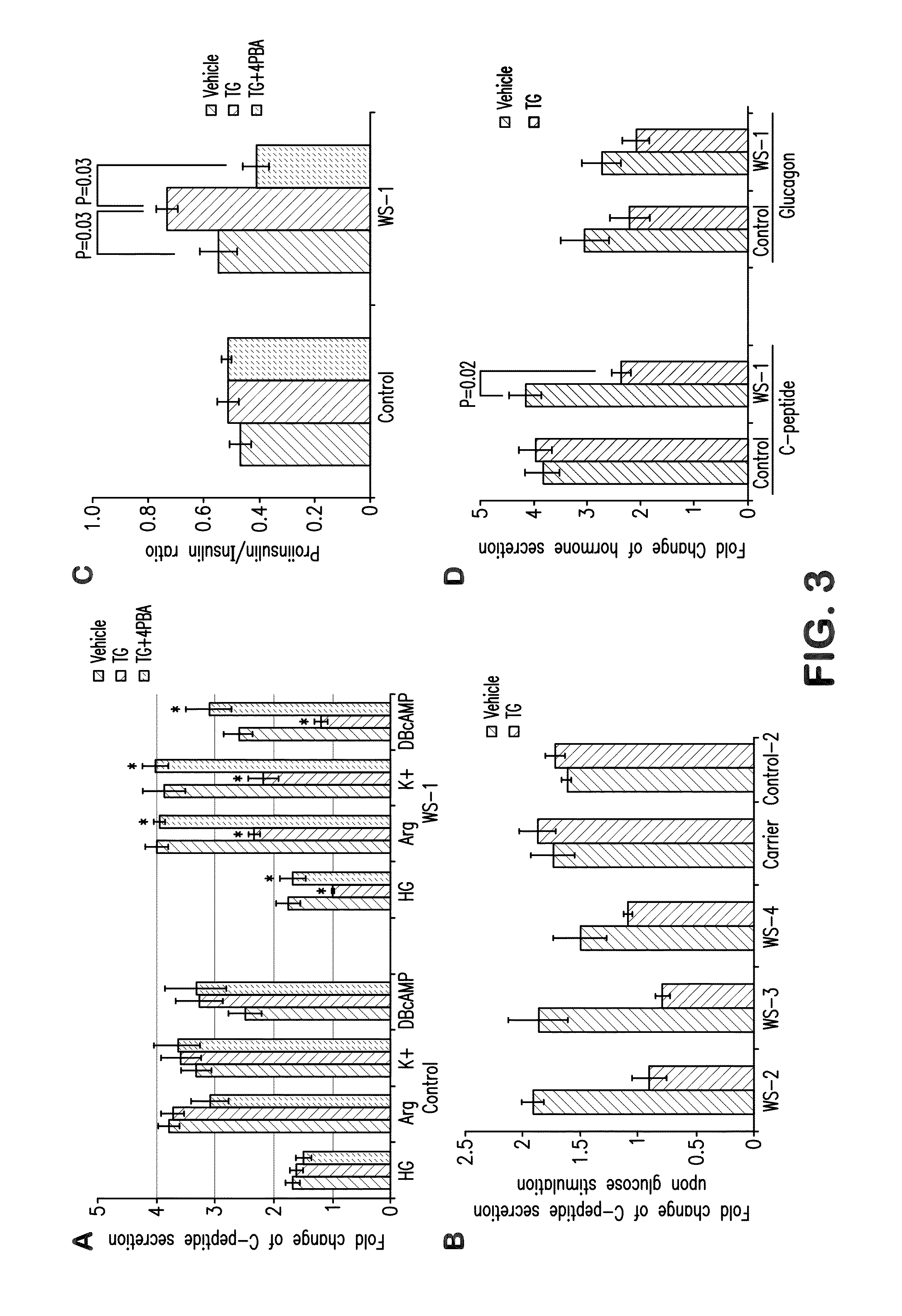Er stress relievers in beta cell protection
a beta cell and stress reliever technology, applied in the field of protein folding, can solve the problems of reduced beta cell mass and function, fatal disease, and reduced function of residual beta cells, and achieve the effects of reducing er stress, improving insulin secretion, and increasing insulin production in beta cells
- Summary
- Abstract
- Description
- Claims
- Application Information
AI Technical Summary
Benefits of technology
Problems solved by technology
Method used
Image
Examples
example 1
[0046]Methods
[0047]Research Subjects and Cell Lines
[0048]Skin biopsies from subjects WS-1 and WS-2 were obtained at the Naomi Berrie Diabetes Center (New York), using an AcuPunch biopsy kit (Acuderm Inc). Fibroblast cells from WS-3, WS-4 and carrier were obtained from Coriell Research Institute (New Jersey), with the respective product number of GM01610, GM01611 and GM01701. All human subjects research was approved by the Columbia IRB and ESCRO committees. Research subjects signed informed consent and samples were coded. Skin biopsies were cut into 10-12 small pieces, and every 2-3 pieces were placed under a glass cover slip in a well of a six-well dish. The cover slips were adhered to the bottom of the culture dish by silicon droplets. 5 ml of biopsy plating media were added into each well. 5 days later, culture medium was used to replace the plating medium. Biopsy pieces were grown in culture medium for 3-4 weeks, with medium changes twice weekly. Biopsy plating medium contained D...
example 2
[0065]Wolfram iPS Cells Differentiate Normally into Beta Cells
[0066]We obtained skin biopsies and established skin cell lines from two subjects affected with Wolfram syndrome, denoted: WS-1 and WS-2. Sequencing of the WFS1 locus revealed that WS-2 is homozygous for a frameshift mutation 1230-1233delCTCT (V412fsX440) (Colosimo, Guida et al. 2003), and that WS-1 is heterozygous for V412fsX440, and also carries a missense mutation P724L (Inoue, Tanizawa et al. 1998). An additional three skin cell lines were obtained from Coriell Research Institute from two siblings with Wolfram syndrome: WS-3 and WS-4, and an unaffected parent. Both WS-3 and WS-4 are heterozygous for the missense mutations W648X and G695V in the WFS1 protein (Inoue, Tanizawa et al. 1998) (FIG. 1A). All Wolfram subjects were insulin-dependent and affected by optic atrophy (Table 1). We generated induced pluripotent stem cells (iPSCs) from fibroblast cell lines using non-integrating Sendai virus vectors encoding the tran...
example 3
[0068]Activated UPR Reduces Insulin Synthesis in Wolfram Beta Cells
[0069]To investigate how WFS1 mutations affect beta-cell function, we first quantified insulin mRNA and protein content in Wolfram, and control stem cell-derived beta cells. To normalize insulin content to beta cell number, cultures were dissociated to single cells, and divided into three fractions to determine cell number, RNA level and insulin content. The insulin mRNA was normalized to TBP (TATA-binding protein) mRNA and to the percentage of insulin-positive cells in each sample. Similarly, insulin content was normalized to the total number of insulin-positive cells. WFS1 deficiency was associated with a 45% reduction in insulin mRNA levels compared to controls (FIG. 2A), and a 40% decrease of insulin protein content (FIG. 2B). This decrease was also reflected in the number of secretory granules imaged by transmission electron microscopy. Differentiated beta cells from unaffected individual contained abundant secr...
PUM
| Property | Measurement | Unit |
|---|---|---|
| temperature | aaaaa | aaaaa |
| pH | aaaaa | aaaaa |
| chemical chaperone | aaaaa | aaaaa |
Abstract
Description
Claims
Application Information
 Login to View More
Login to View More - R&D
- Intellectual Property
- Life Sciences
- Materials
- Tech Scout
- Unparalleled Data Quality
- Higher Quality Content
- 60% Fewer Hallucinations
Browse by: Latest US Patents, China's latest patents, Technical Efficacy Thesaurus, Application Domain, Technology Topic, Popular Technical Reports.
© 2025 PatSnap. All rights reserved.Legal|Privacy policy|Modern Slavery Act Transparency Statement|Sitemap|About US| Contact US: help@patsnap.com



